If you’re planning a trip to Vietnam, this is great news for you. Vietnam e-visa expedites the process of acquiring a visa to Vietnam. The days of long paperwork and time-consuming visits to embassies are over. In the article below, we will go through Vietnam e-visa system, who can get it, how to obtain it, and the wonderful options it provides for travelers. It just takes 2 minutes for reading to get the most practical guidance, after which you may proceed with your Vietnam e-visa with confidence.
1. Newest information about Vietnam e-visa
The Vietnam government officially grants electronic visas (e-visas) to citizens of all countries starting August 15th, 2023.
Instead of 30 days, the duration of the Vietnam e-visa has been officially increased to 90 days. Further, tourists can comfortably enter and exit Vietnam many times within 90 days without applying for a new Vietnam e-visa.
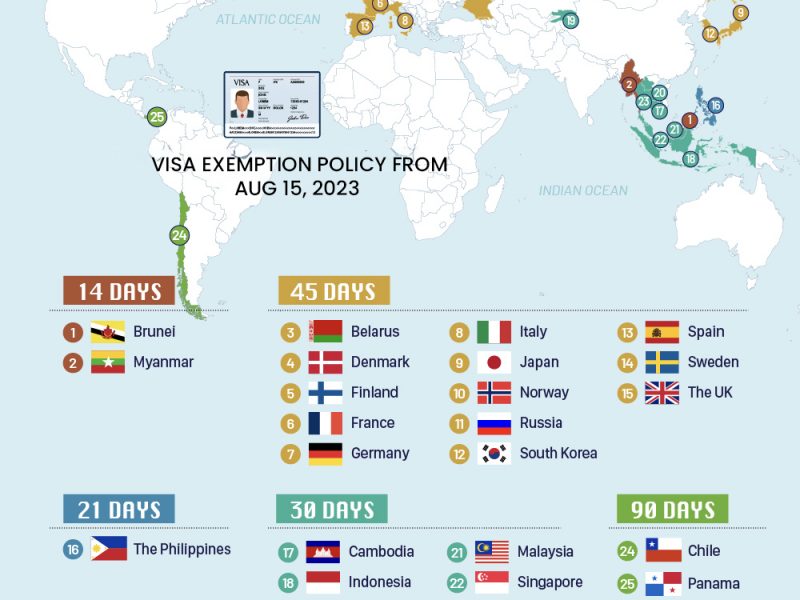
List of 13 international border gates that allow foreigners to enter and exit with Vietnam e-visa:
- Noi Bai International Airport
- Tan Son Nhat International Airport
- Cam Ranh International Airport
- Da Nang International Airport
- Cat Bi International Airport
- Can Tho International Airport
- Phu Quoc International Airport
- Phu Bai International Airport
- Van Don International Airport
- Tho Xuan International Airport
- Dong Hoi International Airport
- Phu Cat International Airport
- Lien Khuong International Airport
List of 16 land border gates that allow foreigners to enter and exit with Vietnam e-visa:
- Tay Trang International border gate (Dien Bien)
- Mong Cai International border gate (Quang Ninh)
- Huu Nghi International border gate (Lang Son)
- Lao Cai International border gate (Lao Cai)
- Na Meo International border gate (Thanh Hoa)
- Nam Can International border gate (Nghe An)
- Cau Treo International border gate (Ha Tinh)
- Cha Lo International border gate (Quang Binh)
- La Lay International border gate (Quang Tri)
- Lao Bao International border gate (Quang Tri)
- Bo Y International border gate (Kon Tum)
- Moc Bai International border gate (Tay Ninh)
- Xa Mat International border gate (Tay Ninh)
- Tinh Bien International border gate (An Giang)
- Vinh Xuong International border gate (An Giang)
- Ha Tien International border gate (Kien Giang)
List of 13 sea border gates that allow foreigners to enter and exit with Vietnam e-visa:
- Hon Gai Port border gate (Quang Ninh)
- Cam Pha Port border gate (Quang Ninh)
- Hai Phong Port Border gate (Hai Phong)
- Nghi Son Port Border gate (Thanh Hoa)
- Vung Ang Port Border gate (Ha Tinh)
- Chan May Port Border gate (Thua Thien Hue)
- Da Nang Port Border gate (Da Nang)
- Nha Trang Port Border gate (Khanh Hoa)
- Quy Nhon Port border gate (Binh Dinh)
- Dung Quat Port Border gate (Quang Ngai)
2. What is Vietnam E-visa?
Vietnam e-visa is an electronic visa system introduced by the Vietnamese government to simplify the visa application process for eligible travelers. It allows visitors from certain countries to apply for their visa online, eliminating the need to visit an embassy or consulate in person. Currently, the duration of stay with a Vietnam e-visa is up to 90 days from the entry date.
You can visit Vietnam at one of 13 airports, 16 land border gates, or 13 port border gates with Vietnam e-visa. Please keep in mind that you can only enter Vietnam through the port of entry you selected on the e-visa application.
3. Vietnam e-visa fee
You have to pay $25 USD for a Vietnam e-visa using an electronic payment method. Some payment options: ATM cards or Visa, Mastercard, JBC, and American Express.
4. Processing time for Vietnam e-visa
The processing of your request will take 3 working days (GMT +7). Exclude Saturday, Sunday, and holidays.
5. Vietnam e-visa requirements
- A passport valid for six (6) months
- Your entire passport data page is a jpeg picture
- A jpg file of a passport photo (4×6, sans glasses, white backdrop).
- A functional global credit or debit card
- A contact email
- An temporary address in Vietnam
- Your departure and arrival dates, airports, and flight times
6. How to get Vietnam e-visa?
Step 1: Non-nationals can utilize the National Web Portal On Immigration E-visa Page to apply for an e-visa.
Step 2: You need to acknowledge reading the brief instructions on this page. To move on to the next step, scroll down and tick the box. Then click “Next”
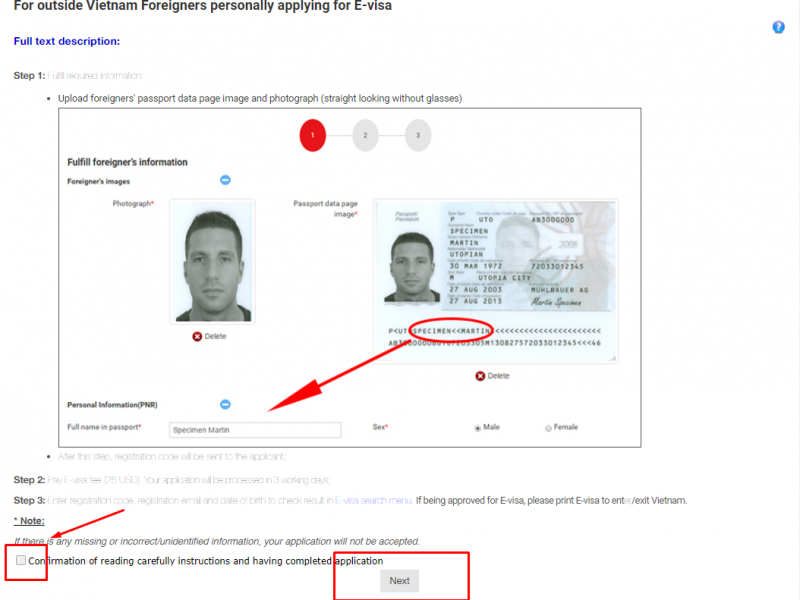
Step 3: Upload your individual photo and the passport photo

Step 4: Fill in every box as you scroll down (the line with the red star must be filled in). To confirm that all of the information is accurate, tick the box “I assure that I have truthfully declared all relevant details.” . Then, type the captcha and click “Review application form”
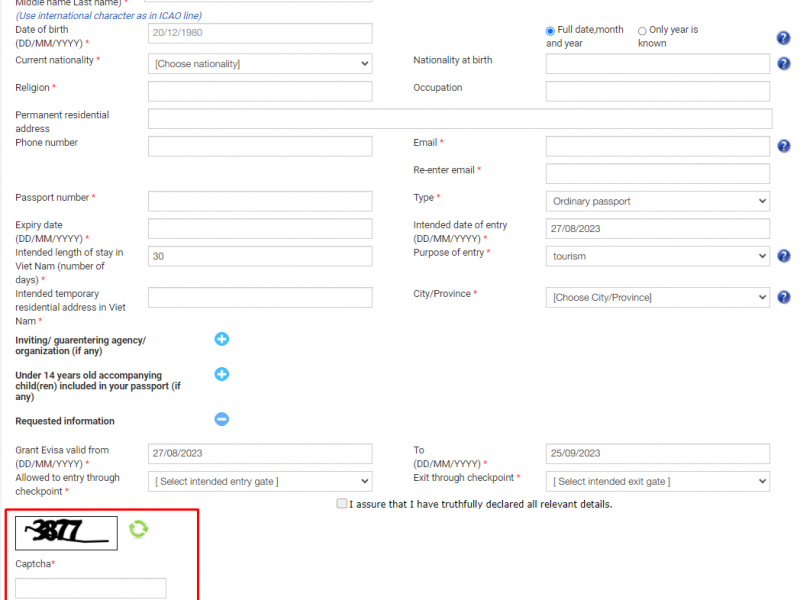
Step 5: After selecting “Review Application Form,” the window shown below will pop up. Then press OK.
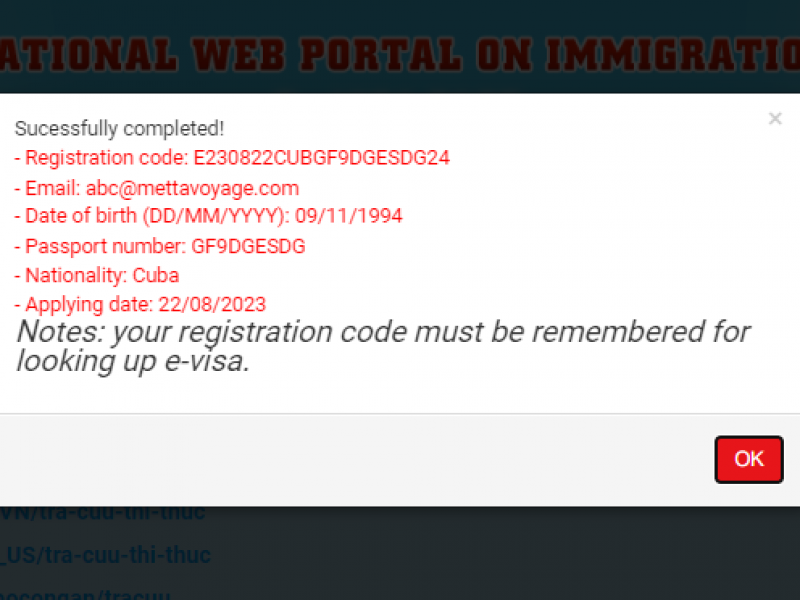
Step 6: Below is a summary page that you should review carefully. You still can back and update the information. Click “Payment” if your information is correct.
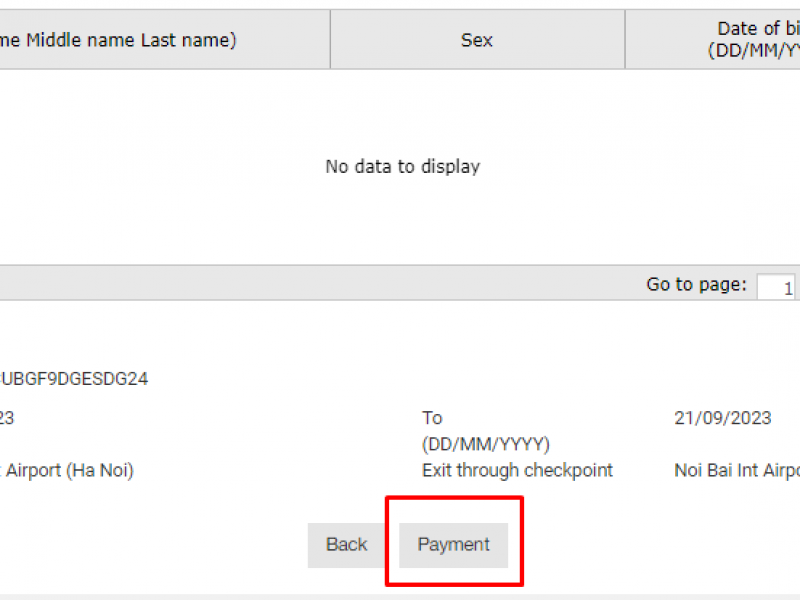
Step 7: Click “Pay e-visa fee”
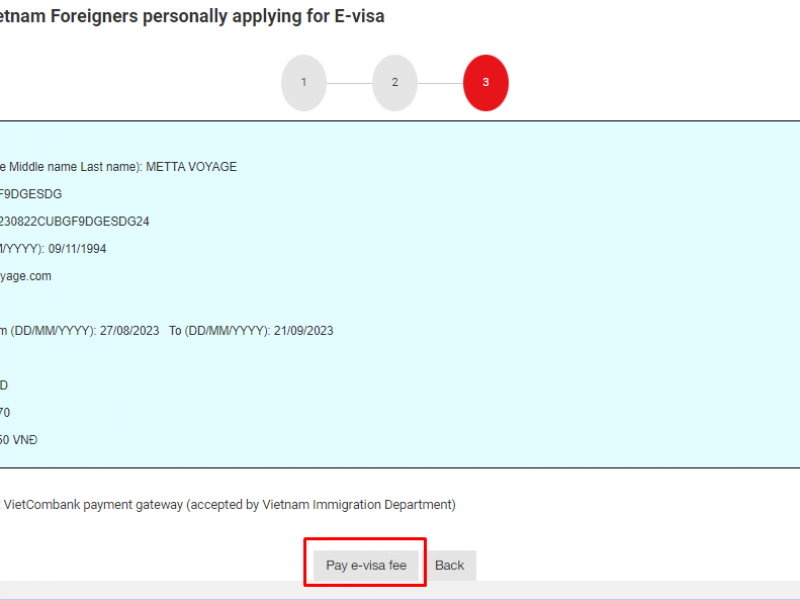
Step 8: Select option payment

7. Verify your Vietnam e-visa status
You can visit the Immigration Department’s website to check on the status of your e-visa after the anticipated processing period (typically 3 working days).
Enter your exact registration code, email address, and birthdate by clicking this link.
8. Vietnam urgent e-visa
We all would like your success in obtaining a Vietnam e-visa. However, some first-time visitors could overlook the due date or make mistakes during the process, which could lead to a late or unsuccessful visa. For prompt assistance, do get in touch with us. Vietnam urgent e-visas are more expensive and quicker than regular ones. It actually aids you in avoiding a protracted wait, nevertheless. With the exception of Saturday and Sunday, processing time is also within working hours. Hotline 24/7: (+84) 989 383 572



0 Comment